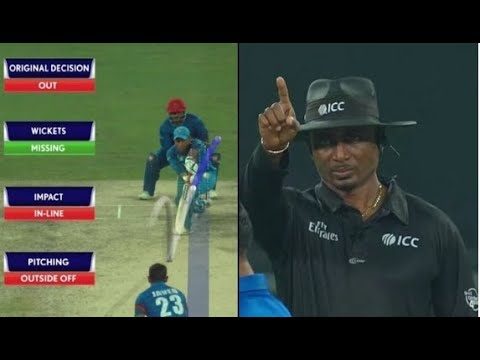Cricket umpiring is a high-stakes game of split-second decisions that can make or break a match. From determining whether a batsman is out or not, to judging the legitimacy of a caught ball, the umpire’s role is vital in ensuring a fair and accurate outcome. However, the process of decision-making in cricket umpiring is not without its challenges. In this article, we delve into the intricacies of this crucial aspect of the game, exploring the techniques and technology that aid umpires in their quest for precision and fairness.
What is the ability of umpires to make decisions?
Umpires hold the power to make crucial decisions in various aspects of the game. Their judgment comes into play when determining if a batted ball is fair or foul, if a pitch is a strike or a ball, or if a runner is safe or out. These decisions, which require a level of subjectivity, are considered final and binding. It is important to note that players, managers, coaches, or substitutes are not allowed to object to such judgment calls. Umpires’ authority in these situations ensures the smooth running of the game and the acceptance of their decisions by all parties involved.
The role of an umpire extends beyond simply enforcing the rules; they are entrusted with the task of making critical game-changing decisions. Their expertise is particularly evident in determining whether a batted ball lands within the fair or foul territory, often requiring quick judgment calls. Additionally, they have the final say on whether a pitch is deemed a strike or a ball, affecting the outcome of each at-bat. Furthermore, umpires play a decisive role in determining if a runner is safe or out, which can significantly impact the momentum of the game. Their ability to make these split-second decisions with confidence is essential for the game’s integrity.
Umpires’ decision-making power is respected and acknowledged by all participants in the game. The rules explicitly state that no player, manager, coach, or substitute is allowed to challenge or object to the umpire’s judgment decisions. This rule ensures that the game proceeds without unnecessary disruptions and maintains a fair and unbiased playing field. Umpires are entrusted with the responsibility of making these difficult decisions, and their finality allows for the game to progress smoothly, with all parties accepting their calls, enabling a fair and competitive environment.
Can an umpire in cricket alter their decision?
Yes, a cricket umpire can change his decision if certain conditions are met. According to the rules, an umpire has the authority to alter any decision as long as it is done promptly and does not go against Law 20.6, which states that a dead ball cannot be revoked. However, it is important to note that once an umpire makes a decision, it is considered final and cannot be changed.
What is the meaning of umpire decision?
An umpire’s decision refers to the ruling made by the on-field umpire during a cricket match. In cricket, the Decision Review System (DRS) is used to review certain decisions, and in the case of Umpire’s Call, it gives deference to the original call made by the on-field umpire. This means that if the DRS review shows that the decision could have gone either way, the umpire’s original call stands. Umpire’s Call is a crucial aspect of the game as it ensures that the on-field umpire’s judgment is respected while also incorporating the use of technology for more accurate decision-making.
Mastering the Signals: A Visual Guide to Cricket Umpiring
Mastering the Signals: A Visual Guide to Cricket Umpiring
In the world of cricket, where split-second decisions can make or break a game, mastering the art of umpiring is essential. This comprehensive visual guide is designed to equip umpires with a concise and clean understanding of the signals used in cricket. From the classic “out” signals to the more nuanced “wide” and “no ball” calls, this guide breaks down each signal with clear illustrations and step-by-step instructions, ensuring that umpires can confidently and accurately communicate decisions to players and spectators alike. With its eye-catching visuals and coherent explanations, this guide is a must-have for aspiring umpires looking to elevate their game and become masters of the signals.
Decoding Dilemmas: Navigating Tough Calls in Cricket Umpiring
Decoding Dilemmas: Navigating Tough Calls in Cricket Umpiring
In the fast-paced and high-pressure world of cricket umpiring, making tough calls can be a daunting task. Umpires are faced with split-second decisions that can have a significant impact on the outcome of a match. From LBW appeals to catch controversies, these dilemmas require a deep understanding of the rules and a keen eye for detail. It is a delicate balance between upholding the integrity of the game and ensuring fairness for all teams involved. With years of experience and extensive training, umpires strive to decode these dilemmas, making accurate decisions that stand up to scrutiny.
One of the most challenging aspects of cricket umpiring is deciphering LBW appeals. With multiple factors to consider, such as the position of the batsman, the trajectory of the ball, and the impact on the stumps, umpires must make a judgment call in a matter of seconds. The pressure to get it right is immense, as a wrong decision can swing the momentum of the game. Umpires rely on their expertise and experience to decode these dilemmas, carefully analyzing the replays and consulting with their fellow umpires if necessary. Their ability to navigate these tough calls with accuracy and fairness is a testament to their dedication and skill in upholding the spirit of the game.
The Umpire’s Toolkit: Essential Techniques for Confident Decision-Making
The Umpire’s Toolkit: Essential Techniques for Confident Decision-Making
In the high-pressure world of sports officiating, having a reliable toolkit of techniques is essential for making confident decisions. With precision and clarity, umpires must navigate complex rules, interpret player actions, and uphold the integrity of the game. Drawing upon a deep understanding of the sport, effective communication skills, and the ability to remain calm under pressure, umpires can confidently make split-second decisions that are fair and unbiased. By honing these essential techniques, umpires can ensure that the game is played with integrity and that players and spectators alike can trust in their judgments.
From Novice to Expert: Unveiling the Secrets of Effective Cricket Umpiring
From Novice to Expert: Unveiling the Secrets of Effective Cricket Umpiring
Embark on a journey through the intricacies of cricket umpiring and unlock the secrets to becoming an expert on the field. This comprehensive guide offers invaluable insights and practical tips that will elevate your umpiring skills from novice to professional. Learn the art of making accurate decisions, mastering the complex rules, and maintaining impartiality in the face of intense competition. With a focus on clear communication and decisive judgment, you will gain the confidence to handle any situation that arises. Whether you aspire to officiate at local matches or on the international stage, this guide will equip you with the knowledge and expertise to excel in the often overlooked but crucial role of the cricket umpire.
In the fast-paced world of cricket, decision-making by umpires plays a crucial role in the outcome of matches. With the advent of technology and various tools at their disposal, umpires are better equipped than ever to make accurate calls. However, despite these advancements, the human element in decision-making cannot be ignored. Umpires bring their experience, expertise, and judgment to the table, adding a unique dimension to the game. While technology can assist in avoiding glaring errors, it is vital to strike a balance between relying on technology and respecting the umpires’ role. Ultimately, the evolution of decision-making in cricket umpiring is an ongoing process, aimed at ensuring fairness and maintaining the spirit of the game.


